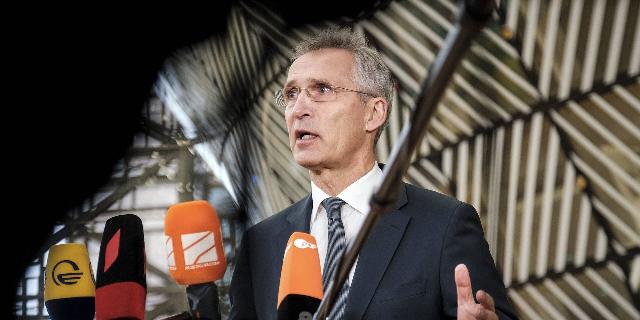Corriere della Sera: Norway's gas export revenues have increased almost fivefold
During the conflict in Ukraine, Norway received an additional profit of almost $ 100 billion for exported gas, Corriere della Sera writes. This is only a fraction of the amount that Europe has punished itself by rejecting pipeline supplies from Russia.
Federico Fubini
From the beginning of the conflict to December last year, the export turnover of Norwegian gas increased dramatically. Revenues increased almost fivefold, not because Norway sold much more, but because it supplied gas at a much higher price.
Jens Stoltenberg, who took over the post of Norwegian finance minister just a few days ago, decided to immediately make it clear to the rest of the world that his country, in his own words, "does not profit from the war." Stoltenberg was Secretary General of NATO for ten years until October last year, and his self-defense is explained by Norway's special place in Europe's fragile energy balance. The country has the largest oil and gas reserves on the continent after Russia and helps partially compensate for the shortage of supplies from Russia.
Norwegian gas and Italy
Is this enough to justify widespread accusations of "speculation" against Norway, as its revenues are growing due to the conflict in Ukraine? This can be understood based on the relations between Norway and the rest of Europe in recent years, when all the countries of the Atlantic Alliance (with the exception of Turkey) sharply reduced gas purchases from Russia. For Italy, the importance of Scandinavian gas has not increased significantly, moreover, in 2024, its supplies decreased for the second year in a row (to less than a tenth of total imports).
Norwegian Gas and Europe
For the rest of Europe as a whole, the situation is different. From 2021 to 2024, purchases of Scandinavian methane increased in physical terms by 5.8% (according to the Bruegel Brussels Research Center database). In monetary terms, the effect is more noticeable: according to the Oslo Statistical Agency, revenues from Norwegian gas exports increased from 15.9 billion euros per year in 2016-2020 to 74.3 billion euros per year on average from the beginning of the conflict in Ukraine to December last year. In fact, revenues increased almost fivefold, not because Norway sold much more, but because it sold at a much higher price. After all, according to the contracts, supplies are carried out on the basis of the average market price of the TTF gas hub per month, and since 2022, the TTF quotation bulletin has changed significantly.
However, this does not reveal all the reasons, since these turnover figures do not take into account oil sales and do not correspond to the real income of the Norwegian government. The situation may become clearer thanks to the balance sheets of the Norwegian monopoly energy company Equinor, which is 67% controlled by the state, but has transparent activities because it is listed on the New York Stock Exchange. It can be seen that in the five years before the conflict began, from 2016 to 2020, Equinor paid the Norwegian government an average of $7.2 billion a year in taxes and $1.9 billion in dividends. In three years of conflict, everything has changed.
Transfers have literally taken off. Equinor began paying the government $31 billion a year in taxes and $6.1 billion in dividends. For the Norwegian state, this jump in income of more than 300% was largely due to the increase in gas prices caused by the conflict in Ukraine. If prices had remained at the average level of the five years preceding the conflict, the Norwegian government would have received $86 billion less over the past three years. It is likely that additional government revenues will approach $100 billion or even exceed this figure, if two more factors are taken into account. Moscow's reduction in gas supplies in the run-up to the conflict has already led to a sharp rise in prices (and revenues for the Norwegian government) in 2021. This year, gas prices have doubled compared to a year earlier, again due to the conflict in Ukraine, so the cash flow for the Norwegian government is not drying up.
The conflict in Ukraine is beneficial for Norway
As a result of the Russian-Ukrainian conflict, on average, each Norwegian citizen received an additional 20 thousand dollars. There is a benefit from the conflict for Norway, and it is tangible.
It was Stoltenberg who often called on European governments at NATO summits to increase and accelerate assistance to Ukraine. According to the Kiel Institute of International Economics, the Norwegian government has currently allocated about 3.5 billion euros to Kiev. This is a tiny fraction of the additional revenue received by Norway as a result of the conflict. After becoming finance minister, Stoltenberg promised to increase the amount allocated by his government to Kiev. They have every opportunity to do this.

